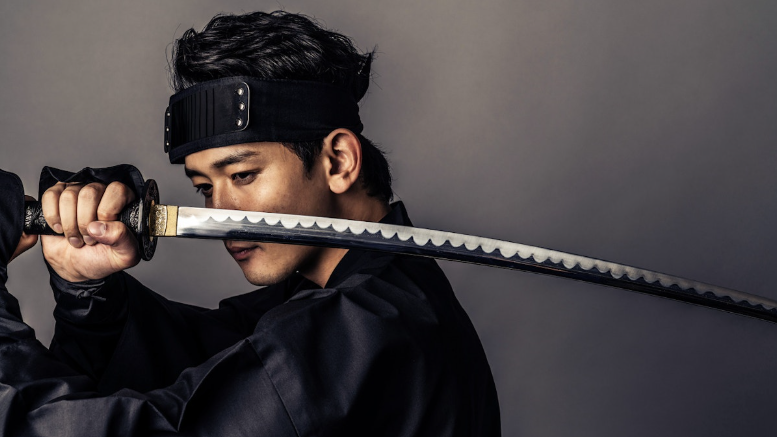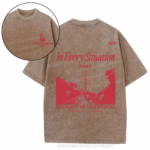The katana is a weapon that embodies a historical narrative combining fire and steel with centuries of traditional Japanese practices. Its iconic curved blade, legendary sharpness, and deep cultural resonance have captivated enthusiasts worldwide. For many, the image of a samurai is inseparable from the sight of a gleaming katana sword held at the ready.
But was this elegant blade the samurai’s primary weapon of choice on the chaotic battlefields of feudal Japan? While pop culture often portrays the samurai and katana as an inseparable duo, history tells a more complex story. This post will explore the evolution of samurai weaponry, battlefield tactics, and the true role of the Japanese sword, separating myth from reality. We will examine how the katana, while not always the main weapon, became the ultimate symbol of the warrior’s soul.
The Historical Evolution of Samurai Weaponry
The journey of the samurai warrior and their arsenal began long before the katana took center stage. In the early periods of their existence, the primary tools of the samurai were dictated by the brutal realities of large-scale warfare, which often took place on horseback and across open fields.
Early Weapons of War
During the Nara (710-794) and Heian (794-1185) periods, the bow (yumi) was the quintessential samurai weapon. Mounted archery, or kyūba no michi (“the way of the horse and bow”), was the premier martial skill. A samurai’s prowess was first and foremost measured by his ability to rain arrows upon his enemies from horseback.
Alongside the bow, polearms were indispensable. The spear (yari) and the glaive-like naginata offered the reach necessary to combat both cavalry and infantry effectively. These long-reach weapons were practical, relatively easy to produce, and devastating in formation fighting. Early swords were typically straight-bladed, like the chokutō, heavily influenced by Chinese and Korean designs.
The Rise of the Katana
The iconic curved katana as we know it emerged during the Muromachi period (1336-1573). This era was marked by near-constant civil war, leading to significant shifts in combat tactics. As battles moved from open fields to closer, more frantic engagements, the need for a reliable sidearm grew. The curved blade of the katana allowed for faster, more fluid drawing and cutting motions, making it superior for close-quarters fighting compared to its straight-bladed predecessors. The masterful technique of differential hardening—creating a razor-sharp edge with a flexible spine—was perfected, resulting in a blade that was both
deadly and resilient.
Samurai Battlefield Tactics and Weapon Choice
To understand why the katana wasn’t always the primary weapon, we must look at how samurai fought. Their tactics evolved significantly over centuries, but practicality always trumped romanticism on the battlefield.
The Age of Bow and Spear
In earlier periods, battles were often decided by volleys of arrows before armies even clashed. Mounted samurai archers would skirmish, disrupt enemy formations, and pick off key targets. When the lines did meet, the long reach of the yari and naginata was crucial for keeping enemies at a distance and breaking through armor. A samurai would typically carry a sword, the tachi (a precursor to the katana, worn cutting-edge down), but it was a secondary weapon, drawn only if their main weapon was lost or broken, or if the fighting devolved into a desperate close-quarters melee.
The Katana in Close-Quarters Combat
As warfare evolved and battles became more infantry-focused during the Sengoku period (“Warring States,” 1467-1615), the role of the sword grew. However, even then, the spear remained the king of the battlefield for the common soldier (ashigaru) and many samurai. The katana, paired with a shorter companion sword (wakizashi), formed the daishō. This set was the samurai’s constant companion, but on the battlefield, the katana was still largely a backup. It was the weapon drawn in the tight press of bodies when a spear became too cumbersome, for fighting inside fortifications, or as a last line of defense. Its primary strength was against lightly armored or unarmored opponents in duels or smaller skirmishes, not against a disciplined unit of spearmen.
A Samurai’s Arsenal: More Than Just a Sword
The samurai was a versatile warrior, trained to use a variety of weapons. Each had a specific purpose and was chosen based on the situation.
- Yari (Spear):The yari was arguably the most important weapon on the battlefield for centuries. Its length, ranging from a few feet to over fifteen, provided a decisive advantage in reach, allowing a warrior to strike from a safe distance. It was effective against both cavalry and foot soldiers and was the primary weapon for large formations.
- Naginata (Polearm):This weapon, with its long wooden shaft and curved blade, was a favorite of warrior monks (sōhei) and, famously, female warriors (onna-bugeisha). The naginata combined the reach of a spear with the cutting power of a sword, making it incredibly versatile for sweeping, slashing, and thrusting.
- Tanto (Dagger):The tanto was a short blade, worn as part of the daishō. It served as a utility knife and a weapon for extremely close combat. In the hands of a skilled warrior, it was a deadly tool for grappling and exploiting gaps in an opponent’s armor.
- Yumi (Bow):Even after its dominance waned, the bow remained a vital part of samurai warfare. Foot archers provided crucial missile support, weakening enemy formations before a charge. Samurai sword training never fully replaced the discipline required for archery.
The Katana as a Symbol of Honor
If the katana was not the primary battlefield weapon for much of samurai history, why does it hold such a legendary status? The answer lies in the Edo period (1603-1868), a long era of relative peace under the Tokugawa shogunate. With large-scale battles a thing of the past, the samurai’s role shifted from warrior to administrator and guardian of the peace.
During this time, the daishō became the exclusive right and symbol of the samurai class. The katana transformed from a tool of war into a badge of office and an emblem of honor. The focus shifted to dueling and the philosophical and spiritual aspects of swordsmanship, known as kenjutsu. The sword became an extension of the samurai’s soul, and its mastery was a path to self-discipline and enlightenment. It was in this peaceful era that the mystique of the katana truly flourished, cementing its place in the cultural imagination.
A Nuanced View of the Warrior’s Tools
The notion of the samurai using the katana as their primary weapon is a powerful image, but one rooted more in cultural symbolism than battlefield reality. For most of their history, samurai relied on the bow and spear as their main instruments of war. The katana was a trusted sidearm, a deadly tool for close combat, and, eventually, the ultimate symbol of their identity.
Understanding this distinction does not diminish the katana’s importance. It instead paints a richer, more accurate picture of the samurai as a highly adaptable and practical warrior, proficient with a range of weapons. The true legacy of the Japanese sword is not just its cutting power, but its profound cultural significance—a piece of living history that represents the spirit and honor of the samurai.





